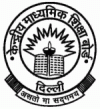
Central Board of Secondary Education
CBSE Class XII - Computer Science Syllabus
UNIT 1: OBJECT ORIENTED PROGRAMMING IN C++
REVIEW: C++ covered In Class -XI, Object Oriented Programming:
Concept of Object Oriented Programming - Data hiding, Data encapsulation,
Class and Object, Abstract class and Concrete class, Polymorphism
(Implementation of polymorphism using Function overloading as an example in
C++); Inheritance, Advantages of Object Oriented Programming over earlier
programming methodologies,
Implementation of Object Oriented Programming concepts in C++:
Definition of a class, Members of a class - Data Members and Member
Functions (methods), Using Private and Public visibility modes, default
visibility mode (private); Member function definition: inside class definition
and outside class definition using scope resolution operator (::); Declaration
of objects as instances of a class; accessing members from object(s), Objects as
function arguments - pass by value and pass by reference;
Constructor and Destructor:
Constructor: Special Characteristics, Declaration and Definition of a
constructor, Default Constructor, Overloaded Constructors, Copy Constructor,
Constructor with default arguments; Destructor: Special Characteristics,
Declaration and definition of destructor;
Inheritance (Extending Classes):
Concept of Inheritance, Base Class, Derived Class, Defining derived classes,
protected visibility mode; Single level inheritance, Multilevel inheritance and
Multiple inheritance, Privately derived, Publicly derived and Protectedly
derived class, accessibility of members from objects and within derived class(es);
Data File Handling:
Need for a data file, Types of data files - Text file and Binary file;
Text File : Basic file operations on text file: Creating/Writing text into file,
Reading and Manipulation of text from an already existing text File (accessing
sequentially); Binary File: Creation of file, Writing data into file,
Searching for required data from file, Appending data to a file, Insertion of
data in sorted file, Deletion of data from file, Modification of data in a file;
Implementation of above mentioned data file handling in C++;
Components of C++ to be used with file handling: Header file:
fstream.h; ifstream, ofstream, fstream classes; Opening a text file in in, out,
and app modes;
Using cascading operators (>> <<)for writing text to the file and reading text
from the file; open(),